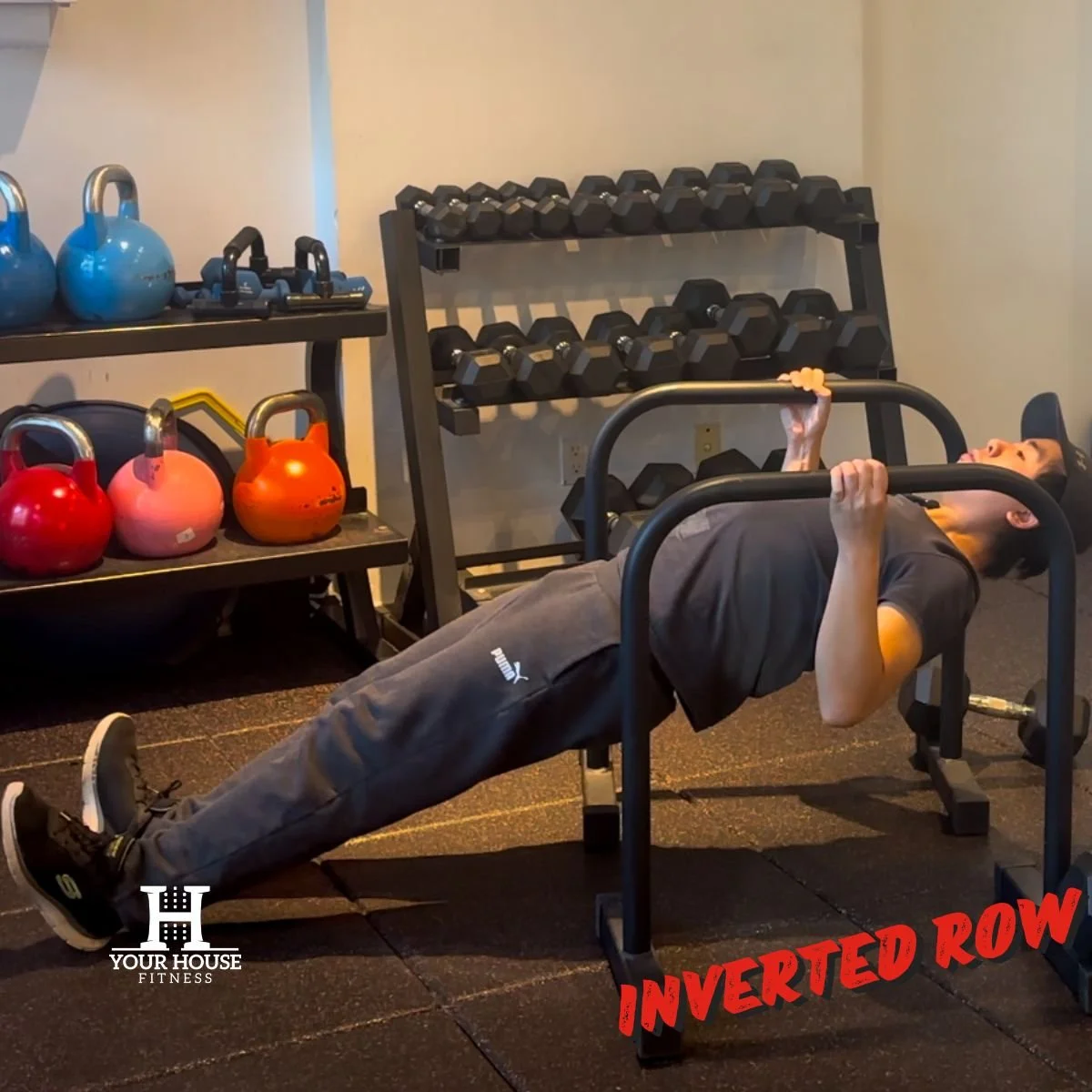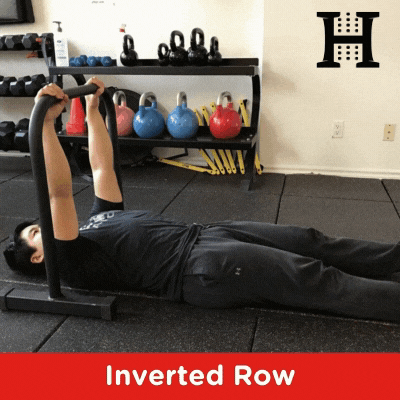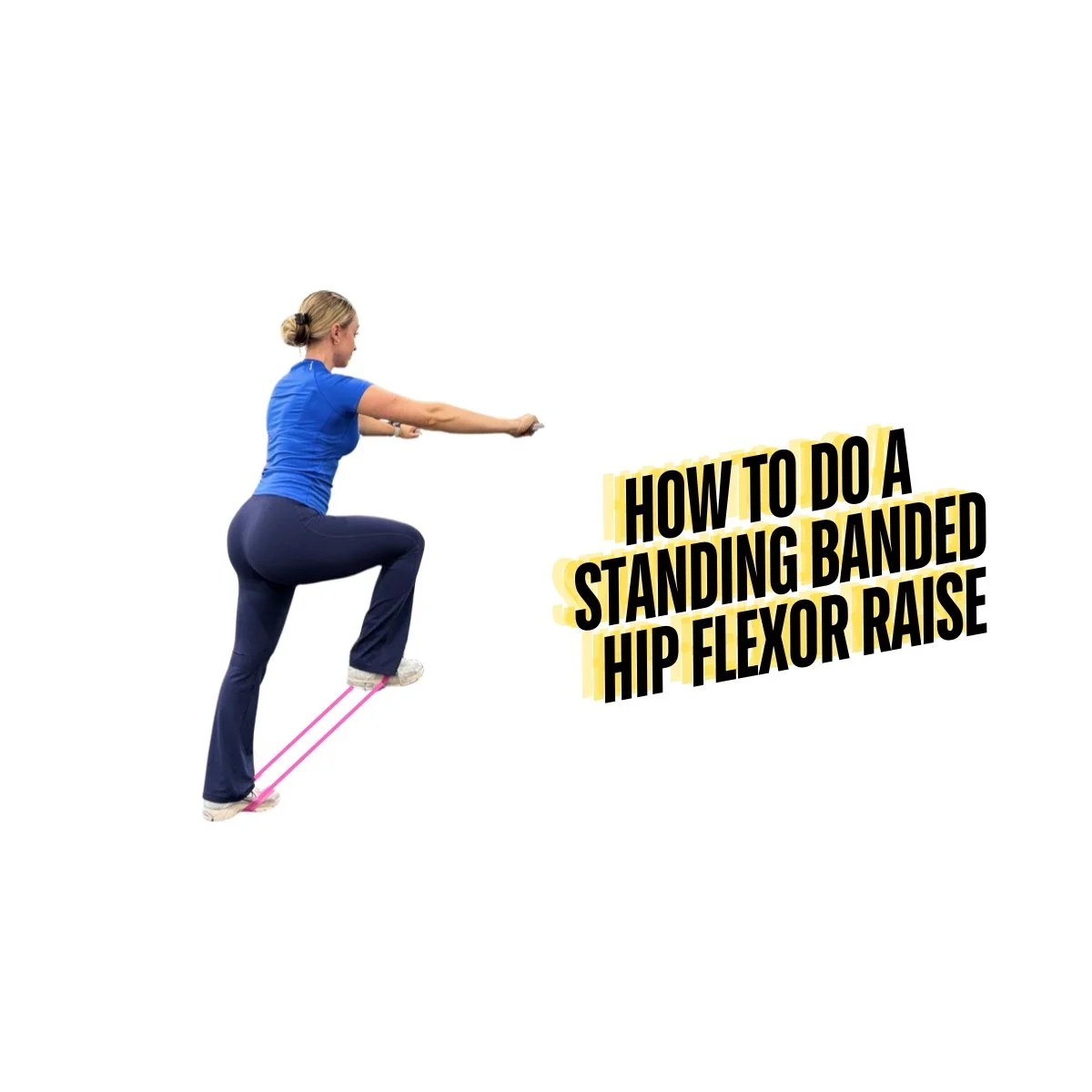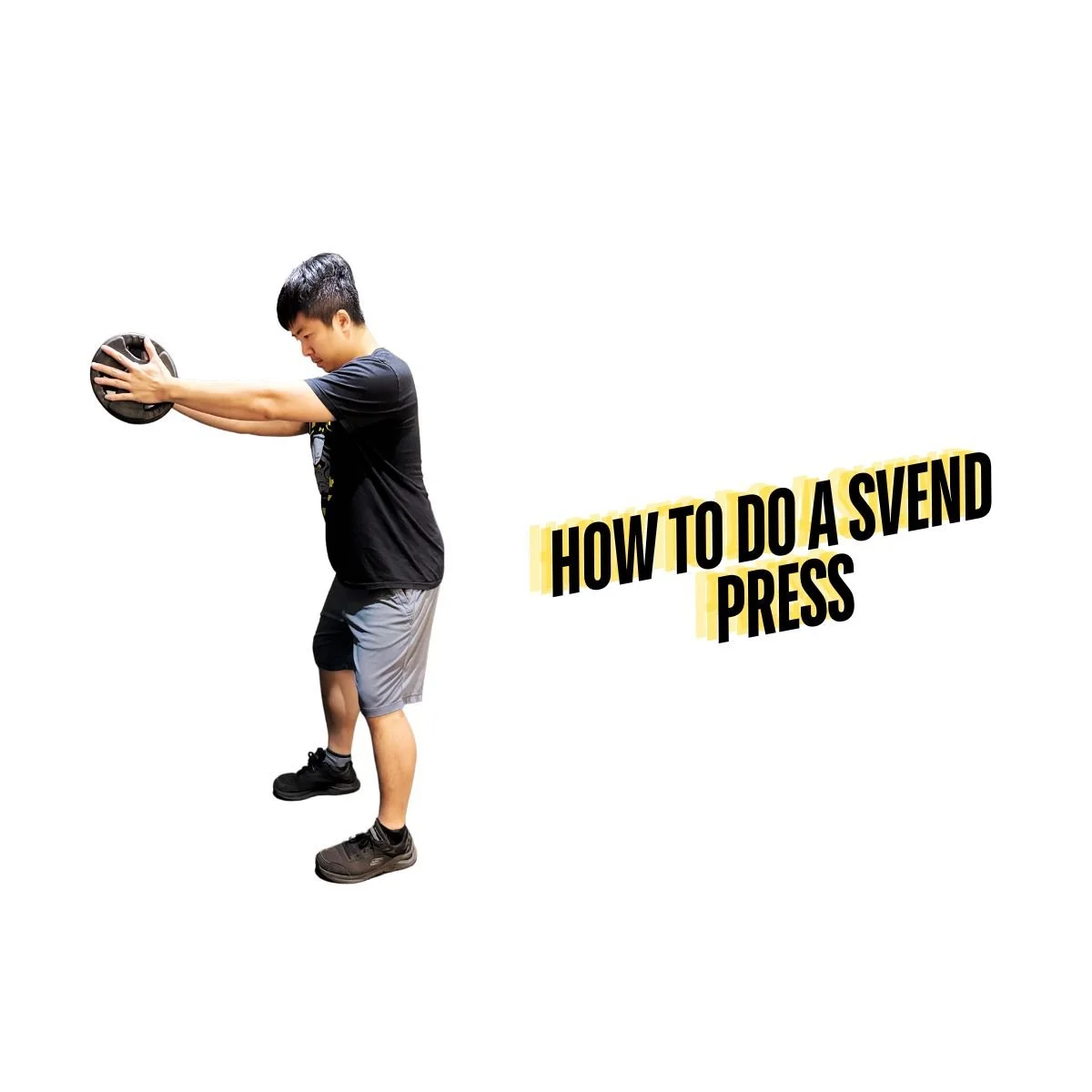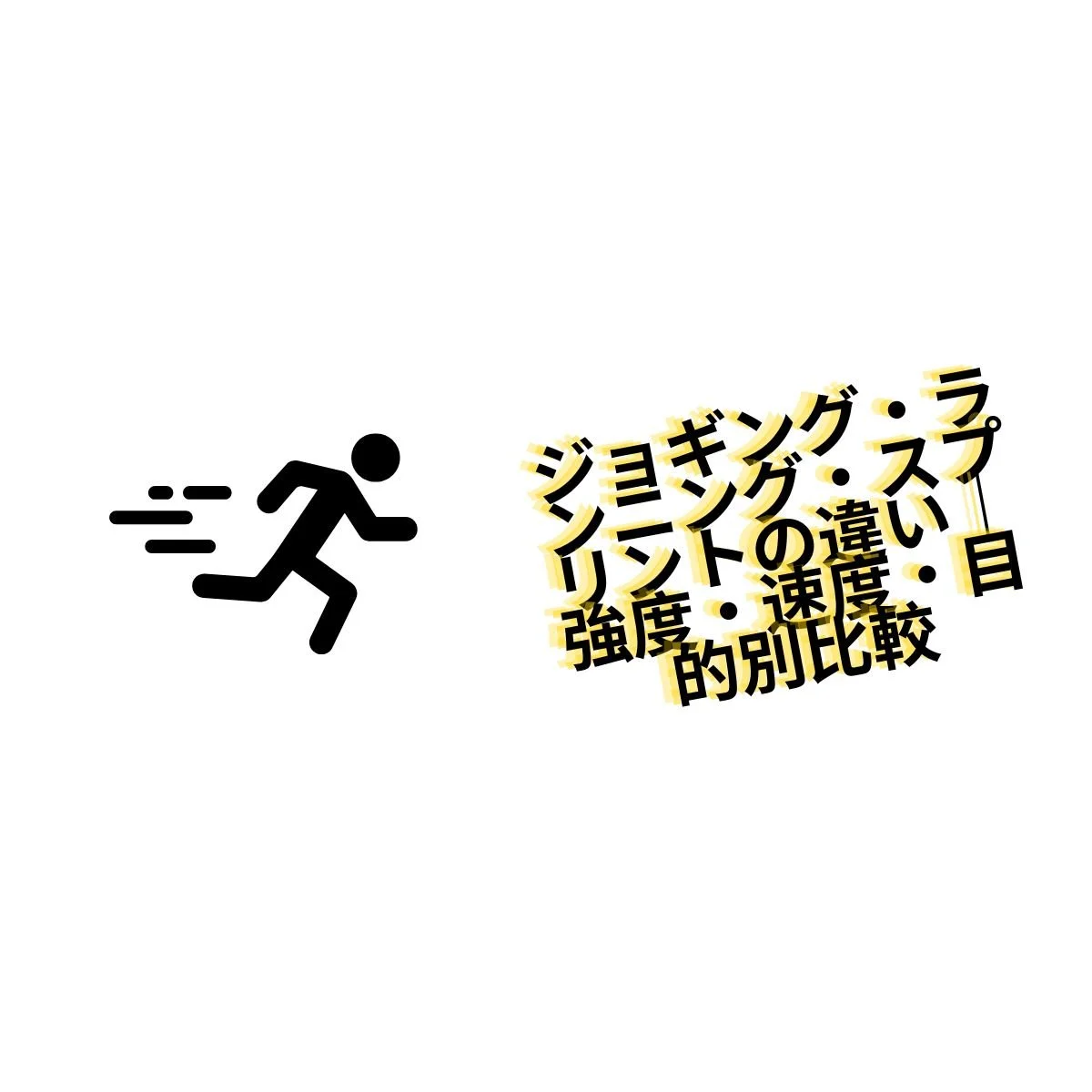Exercise Tutorial: Inverted Row
Table of Contents
What Is an Inverted Row
The Inverted Row (or Bodyweight Row) is an exercise designed to build strength in the muscles of the upper back. By using your own body weight as resistance, the Inverted Row helps increase muscular strength effectively. This exercise is easily modifiable, allowing for both regression and progression to suit any fitness level. The bottom line is: if you’re looking for an exercise to strengthen your back, the Inverted Row is a perfect choice!
How to Do an Inverted Row
The Inverted Row is most commonly performed using a racked barbell or a Smith Machine. This tutorial will guide you on how to perform the Inverted Row using a barbell in a rack. Keep reading below for additional variations of this effective exercise.
Steps to Perform the Inverted Row:
Set Up the Barbell:
Place a barbell at about waist height in a rack.
Get Into Position:
Lie underneath the barbell.
Grip the bar with an overhand grip, hands shoulder-width apart.
For upper back engagement, position the barbell above your mid-upper pecs.
For lat engagement, position the barbell over your lower pecs.
Extend your legs straight out in front of you, keeping your body aligned.
Engage Your Core:
Brace your core and keep your body in a straight line from shoulders to knees.
Avoid sagging in the hips or arching the back.
Pull Yourself Up:
Begin pulling your chest toward the barbell, keeping your shoulders, hips, and knees in alignment.
Aim to bring your chest as close to the bar as possible.
Lower Yourself Back Down:
Slowly return to the starting position, maintaining control throughout the movement.
Repeat:
Perform the desired number of sets and reps, ensuring proper form on each repetition.
Inverted Row Muscles Worked
The Inverted Row is a classic exercise because it directly targets the muscles of the upper back. The primary and supporting muscles engaged during the Inverted Row include:
Additionally, the Inverted Row helps improve grip strength and activates several stabilizing muscles throughout the back, making it a comprehensive upper-body exercise.
Inverted Row Benefits
There are many benefits to consistently including Inverted Rows in your exercise routine! Some Inverted Row benefits include:
Can help you to do a pull-up
You are training a foundational movement
Can easily progress the exercise
Lighter on the joints compared to other exercises
Can increase time under tension
Great for beginners and advanced athletes
Will help to increase muscular strength in the back
Why Is an Inverted Row Useful
The Inverted Row is a highly useful exercise because it offers numerous benefits and doesn’t require expensive equipment. It can even be performed at home, which we’ll cover later in this article. Additionally, Inverted Rows are easy to modify, making them accessible for all fitness levels.
For example:
To increase difficulty, lower the barbell.
For beginners, bending the knees instead of keeping the legs extended can make the exercise more manageable.
Another key reason the Inverted Row is valuable is its role in training for pull-ups, helping to build the strength and mechanics needed to achieve them.
Inverted Row Alternative
An Inverted Row Alternative is the Barbell Row. Check out our full exercise tutorial on the Barbell Row here. Additional alternatives to the Inverted Row include the Seated Cable Row and the Pull-up.
Inverted Row Variations
There are many Inverted Row variations you can try, each offering unique challenges to the body. Experiment with these variations to find which works best for you!
TRX Inverted Row
This variation is ideal for those without access to a barbell rack or Smith Machine. Grab the TRX handles and set up as you would for a barbell Inverted Row. Hang underneath the handles with your palms facing each other. Perform the row with legs extended, or bend the knees for an easier option.
Smith Machine Inverted Row
This is identical to the traditional Inverted Row but uses a Smith Machine. Adjust the bar height to change the difficulty—the lower the bar, the harder the exercise.
Barbell Inverted Row
The Barbell Inverted Row is when the Inverted Row is performed using a barbell. This is also the variation that we described step-by-step above!
Modified Inverted Row
Perfect for beginners, this version involves bending the knees to reduce the range of motion and improve stability, making it easier to pull the body up.
Wide Grip Inverted Row
In this variation, the hands are placed wider than shoulder-width on the barbell, targeting different parts of the back.
Underhand Inverted Row
Also known as the Reverse Grip Inverted Row, this variation uses an underhand grip with palms facing the body, focusing more on the biceps.
Weighted Inverted Row
Add a plate to your chest for extra resistance. To prevent the plate from sliding, perform this variation with your feet elevated.
One-Arm Suspension Trainer Inverted Row
An advanced progression, this variation uses a TRX with one arm. It requires significant stability and control. Ensure your body stays perpendicular to the TRX during the movement.
Inverted Dumbbell Row
This can be performed as a bent-over dumbbell row or on an incline bench for a slightly different angle.
Inverted Row At Home
You can perform the Inverted Row at home by using a sturdy table or desk. Hang underneath it and use a reverse grip to perform the row. Ensure the table or desk is secure, and consider having someone sit on it to prevent it from tipping over.
Frequently Asked Questions About the Inverted Row
What Is an Inverted Row Bar?
The Inverted Row can also be performed using Inverted Row Bars instead of a barbell. These are often referred to as portable pull-up bars or dip bars.
What’s the Difference Between an Inverted Row and a Pull-Up?
While both exercises are pulling movements that target the back, there are key differences:
Pulling Direction:
The Inverted Row is a horizontal pull, focusing more on the Rhomboids and Trapezius.
The Pull-Up is a vertical pull, primarily engaging the Latissimus Dorsi.
Progression:
The Inverted Row is a great exercise to build strength and progress toward performing a Pull-Up.
Similarities:
Both exercises require scapular retraction, which helps prevent injuries and improves Pull-Up performance.
Overall, both the Inverted Row and the Pull-Up are excellent for building back strength and muscle, each with its unique focus and benefits.

